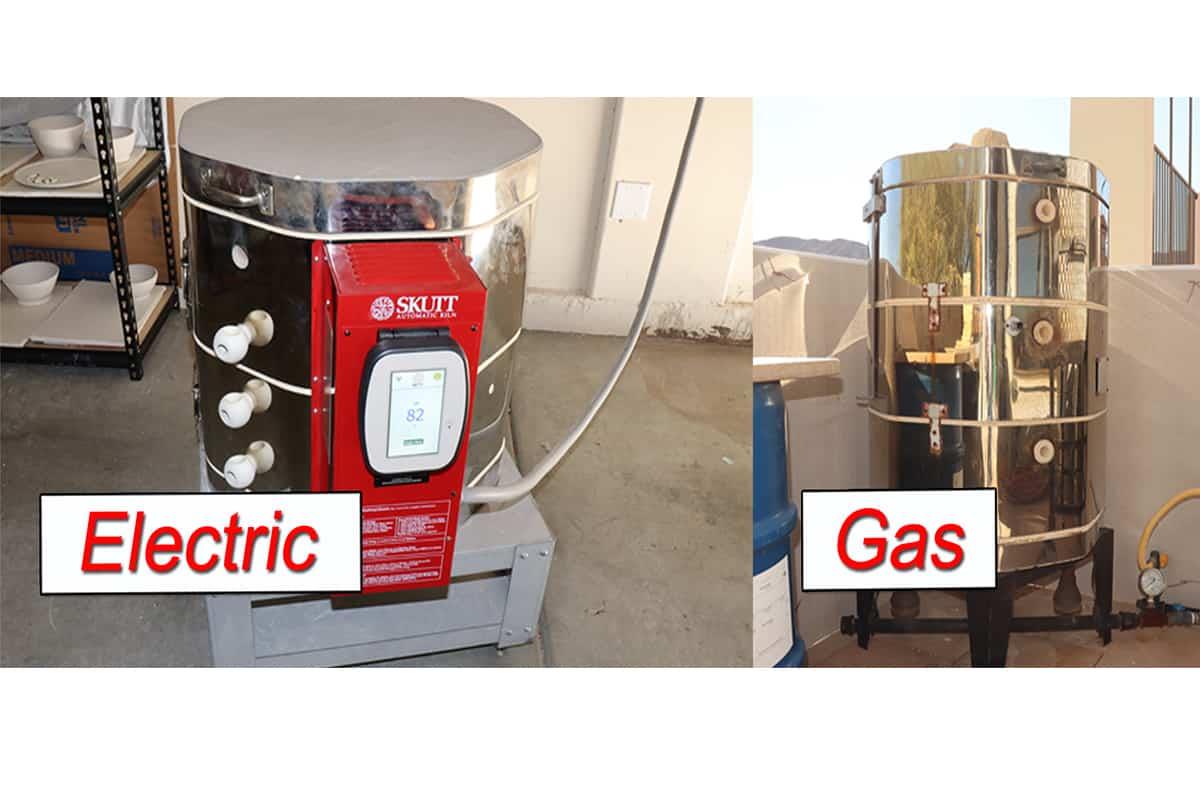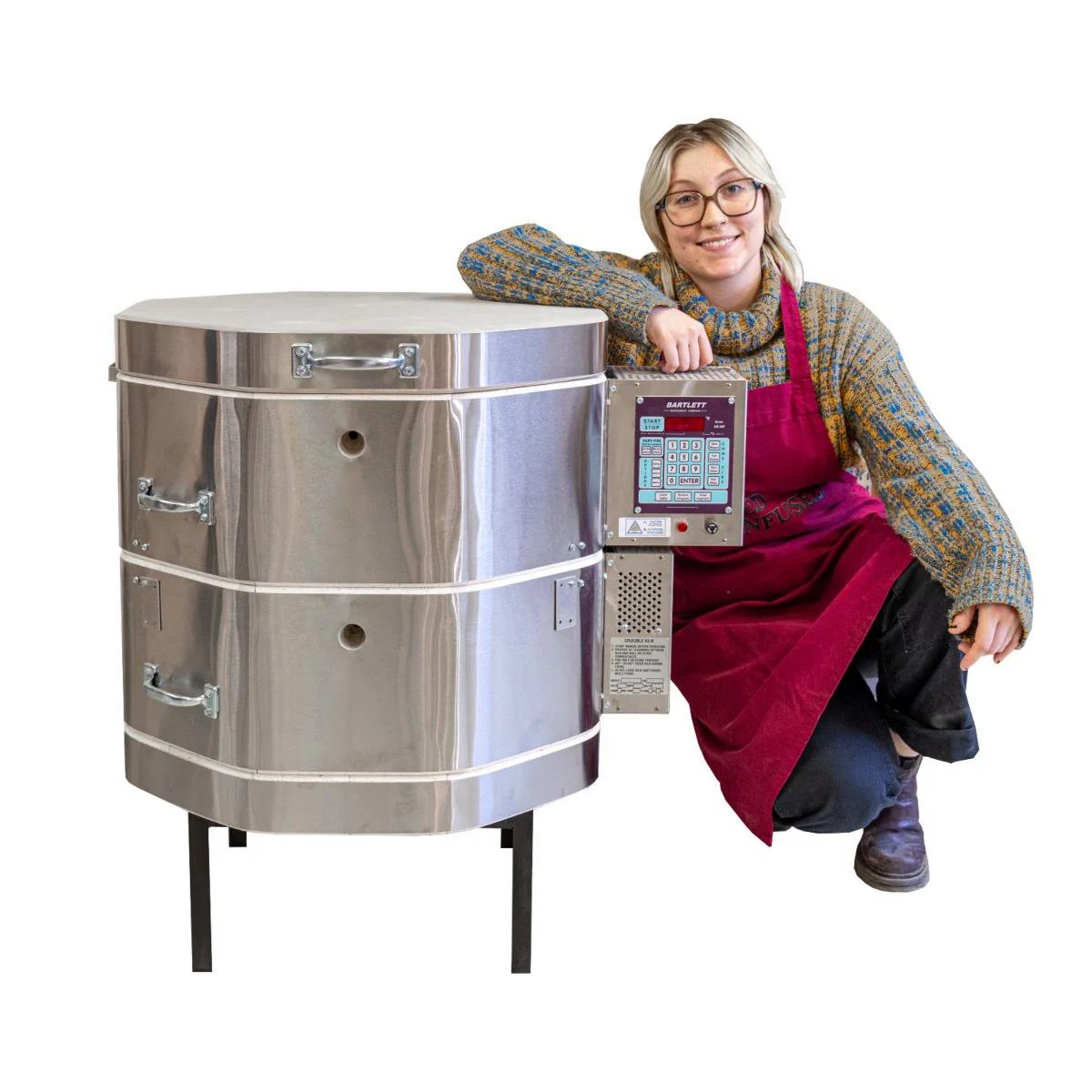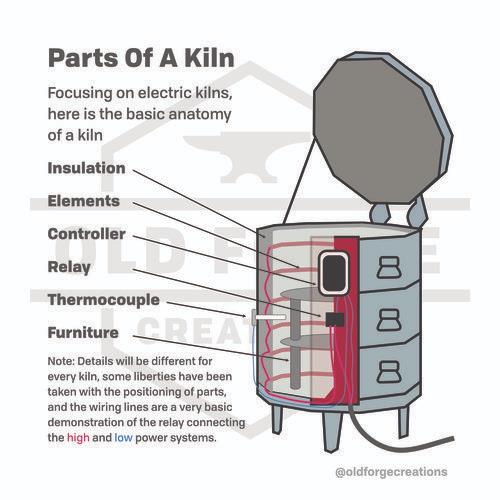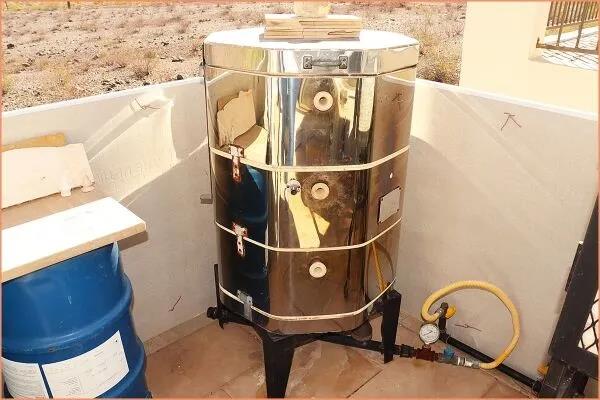Electric Vs Gas Kiln | Head-To-Head Details Comparison
Time of issue: 2024-10-10 16:16:07
Deciding on the right kiln for your ceramic projects can make a huge difference in how your pieces turn out. Are you considering an electric vs gas kiln? Well, both have their perks. Electric kilns are super user-friendly and offer precise temperature control, making them perfect for smaller projects or when consistency is key. On the flip side, gas kilns give you a bit more temperature range and the ability to play with reduction firing, which can really make your glazes pop with character.
So, whether you’re just dabbling in pottery in your backyard shed or you’re a seasoned pro cranking out batches, getting to grips with what each type of kiln can do for you is pretty crucial. Here atGlobal Reach Ceramic, we’ve got all the insights and support you need to find the kiln that fits just right with your artistic goals.
Let’s jump into the nitty-gritty of electric and gas kilns together and find out which one might be your perfect match!
Understanding the Basics Kiln

What is a kiln?
Think of a kiln as a powerhouse tool for firing your clay and ceramics to perfection. It’s essentially a high-temperature oven that transforms your soft clay projects into finished, sturdy pieces. From your favorite coffee mug to those chic ceramic tiles, it all starts in the kiln.
How do kilns work?
Kilns create high temperatures through electrical elements or burning fuel, like gas or wood, to chemically and physically change clay into a solid structure. Whether you’re a hobbyist or a professional, mastering the kiln is key to unlocking the full potential of your ceramic creations.
Types of kilns (electric, gas, wood-fired, etc.)
There’s a world of kilns out there! Electric kilns are loved for their simplicity and control, making them perfect for beginners and small studios. Gas kilns offer you a more hands-on approach with atmosphere variations that can give stunning effects. And let’s not forget wood-fired kilns, which require a bit more muscle but reward you with uniquely earthy and rich finishes.
Electric Kilns: A Closer Look

How electric kilns work
Electric kilns are all about consistency and control. They heat up through coils of high-resistance wire that glow red hot. You can dial in the exact temperature you need, and the kiln will maintain it throughout the firing cycle.
Advantages of electric kilns
The biggest perks of going electric? Precision temperature control, ease of use, and safety. They’re plug-and-play, often running right off your household electricity, and you don’t have to worry about flames or gas leaks. They're also great in settings where you need to keep things clean and fume-free, like in educational environments or small indoor spaces.
Disadvantages of electric kilns
While electric kilns are convenient, they can get pricey with higher energy costs, especially if you’re firing up often. They also tend to have limited firing capacity, which might not cut it for larger pieces or production runs.
Popular brands of electric kilns
When it comes to picking an electric kiln, brands like Skutt and Paragon are top of the line, offering a range of sizes and customizable options to fit any artist’s needs.
Gas Kilns: A Closer Look

How Gas Kilns Work
Gas kilns are all about the flame. They operate by burning natural gas or propane, which directly heats the ceramic pieces inside through combustion. The setup for a gas kiln often involves a bit more hardware than electric kilns, requiring gas lines, burners, and often a chimney or venting system to ensure that fumes are safely expelled. Adjusting the flame and airflow allows you to control the atmosphere inside the kiln, which can greatly affect the finished look of your ceramics.
Advantages of Gas Kilns
One of the biggest draws of gas kilns is their larger capacity, making them ideal for larger batches or bigger pieces. They also offer a broader temperature range, which can be crucial for certain glaze effects and clay bodies that require higher firing temperatures.
Gas kilns excel in creating reduction atmospheres - where oxygen is limited, and certain chemical reactions happen in the glaze and clay, producing rich, vibrant finishes that can't be achieved in an oxidizing atmosphere like that of an electric kiln. Additionally, they generally have lower operating costs compared to electric kilns, especially where gas is cheaper than electricity, and their higher firing capacity provides a more traditional and hands-on firing experience.
Drawbacks of Gas Kilns
While there are many benefits to using gas kilns, they come with their own set of challenges. Maintenance is more demanding, as components such as burners, gas lines, and safety systems must regularly be checked and serviced to ensure they are functioning properly.
There are also safety concerns; working with combustible gases requires careful handling to prevent leaks and ensure adequate ventilation. These factors make gas kilns less suitable for casual hobbyists or settings without the proper infrastructure to handle them safely.
Popular Brands of Gas Kilns
Several brands stand out when it comes to reliable and efficient gas kilns. Olympic Kilns offers a range of models that cater to both small studios and large production environments, known for their durability and excellent temperature control.
Bailey Gas Kilns are another top choice, favored for their innovative designs that ensure even heating and energy efficiency. These brands are popular among ceramic artists who require robust performance and consistent results.
Electric Vs Gas Kiln :Comparing Performance, Cost, and Efficiency
| Feature | Electric Kilns | Gas Kilns |
| Initial Cost | Typically lower, more affordable upfront. | Higher due to additional infrastructure and setup requirements. |
| Operating Costs | Higher due to the cost of electricity. | Lower, especially in areas where gas is cheaper than electricity. |
| Firing Capacity | Generally smaller, suitable for individual artists or small batches. | Larger capacities available, ideal for larger productions or pieces. |
| Temperature Control | Precise control with digital controllers for consistent results. | Broader range, manual control can introduce variability. |
| Maintenance | Less frequent; mainly involves checking electrical components. | More intensive; requires regular checks on gas lines and safety systems. |
| Safety | Safer with no combustible fuels used. | Higher risk due to combustible gases, requires strict safety protocols. |
| Energy Efficiency | Less energy-efficient for high temperatures. | More energy-efficient for high temperatures and large volumes. |
| Suitability for Artistic Techniques | Excellent for detailed work and sensitive materials requiring oxidation atmospheres. | Versatile, able to achieve unique reduction effects not possible in electric kilns. |
Temperature Control and Consistency
When it comes to temperature control and consistency, electric kilns are the front-runners. These kilns are equipped with digital controllers that allow ceramicists to set precise temperatures, which the kiln will maintain throughout the firing cycle.
This level of control makes electric kilns ideal for projects that require specific firing curves and consistent results every time.
Gas kilns, while offering broader temperature ranges, require manual intervention to adjust the flame and monitor the kiln atmosphere. This can lead to slight variations in temperature and consistency between firings, which might be a drawback for some processes but can also add a unique character to the pieces, prized in certain artistic circles.
Costs and Energy Efficiency
Cost and energy efficiency are significant considerations. Electric kilns, although more expensive to operate due to the cost of electricity, often have lower initial purchase prices. They are also easier to install, as they don’t require the same level of infrastructure as gas kilns.
Gas kilns, on the other hand, typically have higher initial costs due to the need for gas installations and venting systems. However, they are usually more cost-effective in the long run, especially in regions where gas is cheaper than electricity. They are also considered more energy-efficient for high-capacity or high-temperature firings.
Suitability for Different Artistic Techniques
Different artistic techniques require different types of kiln atmospheres and temperatures. Electric kilns provide a clean, oxidation atmosphere ideal for achieving bright glaze colors and detailed surface treatments. They are well-suited for delicate work and materials that are sensitive to the variations in atmospheric conditions.
Gas kilns offer the unique advantage of creating both oxidation and reduction atmospheres, necessary for certain glaze effects such as copper reds and celadons. This versatility makes gas kilns more suitable for artists who experiment with a variety of glaze types and who appreciate the depth and richness that reduction firing can bring to their work.
Firing Capacity Comparison
Designed with smaller to medium capacities, electric kilns are ideal for smaller studios or individual artists. They require lower maintenance, typically involving routine checks of the elements and electrical connections.
Gas kilns are better suited for high-production environments or for creating larger pieces due to their larger capacities. However, they require higher safety precautions because of the gas usage, necessitating strict adherence to safety protocols, such as preventing leaks and ensuring proper ventilation.
Factors to Consider When Choosing a Kiln
When selecting the right kiln for your ceramic endeavors, several factors come into play that will influence your decision. Understanding these can help you find a kiln that not only fits your current needs but also accommodates potential future expansions or changes in your ceramic practice. Below are the key factors to consider.
Space Availability & Installation Requirements
The size of your studio will greatly determine the size of the kiln you can accommodate. Electric kilns, which are generally smaller, might be more suitable for tight spaces or shared areas. Additionally, consider whether your studio space can handle the installation requirements of a gas kiln, which may include additional venting systems and safety clearances around the kiln.
Firing Needs
The type of ceramic work you do will influence your kiln choice. If you require high temperatures for porcelain or stoneware, a gas kiln might be preferable.
Volume of Work
How much you intend to fire at one time will also play a role. If you’re producing large quantities or larger pieces, the broader firing capacity of a gas kiln could be more beneficial.
Personal Preferences
Some artists prefer the specific results from reduction firing, which is more achievable in a gas kiln. If you prefer more automated and controlled conditions, an electric kiln with programmable settings might be your best choice.
Budget
Electric kilns generally have a lower initial purchase cost compared to gas kilns. However, operational costs can vary significantly. Electric kilns may be more expensive to operate depending on local electricity rates, whereas gas kilns often have lower fuel costs.
Kiln Ventilation
Proper ventilation is crucial, especially with gas kilns, to safely expel gases produced during firing. Ensuring good ventilation helps maintain a healthy air quality in your studio, which is important for both comfort and health.
Kiln Insulation
Well-insulated kilns retain heat better, which can reduce energy costs and improve firing efficiency. Good insulation is also vital for reaching higher temperatures and maintaining a stable internal environment, which can impact the quality of your final products.
Kiln Accessories
The availability and compatibility of kiln shelves and posts can affect how effectively you can load your kiln. Tools like thermocouples and pyrometers help monitor temperature accurately, which is crucial for achieving consistent results.
Safety and maintenance tools, such as kiln gloves, glasses, and maintenance kits, are also important for safe operation and upkeep.
Final Considerations
Deciding between an electric vs gas kiln can really shape the way your ceramic projects turn out. Electric kilns are all about precision and ease of use, which is great if you like consistency and don’t want to deal with a lot of fuss. On the flip side, gas kilns give you more room to experiment with temperatures and cool glaze effects, especially for larger projects.
At Global Reach Ceramic, we’re here to help you find the kiln that fits your needs perfectly. Whether you’re after the simplicity of electric or the creative possibilities of gas, we’ve got you covered.
So, what are you more into? Consistency or creative freedom? Let’s figure out which kiln will take your work to the next level!
RECENT POSTS
- The Benefits of Wholesale High-Quality Ceramic Products for Retailers
2025-12-17
- Can You Make an Ashtray with Air Dry Clay? Pros, Cons, and Safer Alternatives
2025-12-17
- The Impact of Ceramic Materials in Energy-Efficient Buildings: Benefits and Applications
2025-12-04
- Top 7 Ceramic Cookware Health Benefits: Why It’s a Safer Choice for Your Kitchen
2025-12-04
- How to Clean Ceramic Planters and Improve Their Lifespan?
2025-11-17
- 15 Best Ceramic Holiday Gift Ideas for 2025: Thoughtful, Elegant & Heartfelt
2025-11-17
- Stoneware vs Porcelain vs Earthenware: Quick Decision Guide
2025-10-09
- Are Ceramic Glazes Food Safe? The Truth Behind the Shine
2025-10-09










